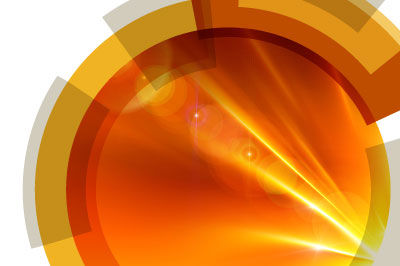Nanoparticles can be viewed as a new type of "atom" with size dependent physical, optical and electronic properties that make them suitable for a wide variety of applications. There are many open questions in the field of nanoparticle synthesis and assembly.
For example:
Faraday Discussions have a special format where research papers written by the speakers are distributed to all participants before the meeting, and most of the meeting is devoted to discussing the papers. Everyone contributes to the discussion - including presenting their own relevant research. The research papers and a record of the discussion are published in the journal Faraday Discussions.
Poster Prize Winners
Igor Fredin, The University of Chicago, USA
Daniela John, DWI - Leibniz Institute for Interactive Materials, Germany
For example:
- How does the nanoparticle-nanoparticle potential govern nanoparticle formation or assembly?
- Can one design a nanoparticle from the ground up, according to theoretical predictions, which will self-assemble into a given nanoparticle superlattice structure?
- How does the assembly process vary with nanoparticle shape (e.g., spherical, rod, triangular, square, etc.) and the ligand coating which surrounds each nanoparticle?
- Can one make more robust nanoparticle superlattice structures, of macroscopic size (millimetre to centimetre), which can be moulded, milled and machined into desired shapes?
- Can one make nanoparticles that are stable at high temperature so that their assemblies can be melted, alloyed and cast?
Themes
- Nanoparticle synthesis - physical chemistry of nanoparticle shape and ligand control
- Theoretical insights into nanoparticle synthesis and nanoparticle assembly
- Nanoparticle self-assembly
- Nanoparticle directed assembly
Format
The Faraday Division have been organising high impact Faraday Discussions in rapidly developing areas of physical chemistry and its interfaces with other scientific disciplines for over 100 years.Faraday Discussions have a special format where research papers written by the speakers are distributed to all participants before the meeting, and most of the meeting is devoted to discussing the papers. Everyone contributes to the discussion - including presenting their own relevant research. The research papers and a record of the discussion are published in the journal Faraday Discussions.
Aims
The purpose of this Faraday Discussion meeting is bring together a diverse group of scientists to discuss the latest developments in nanoparticle theory, synthesis and assembly in order to generate new ideas and engender new collaborations between these groups.Poster Prize Winners
Igor Fredin, The University of Chicago, USA
Daniela John, DWI - Leibniz Institute for Interactive Materials, Germany












